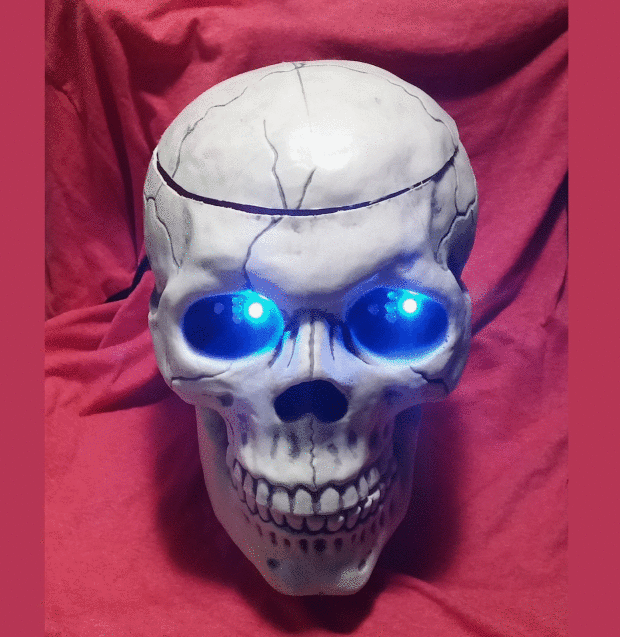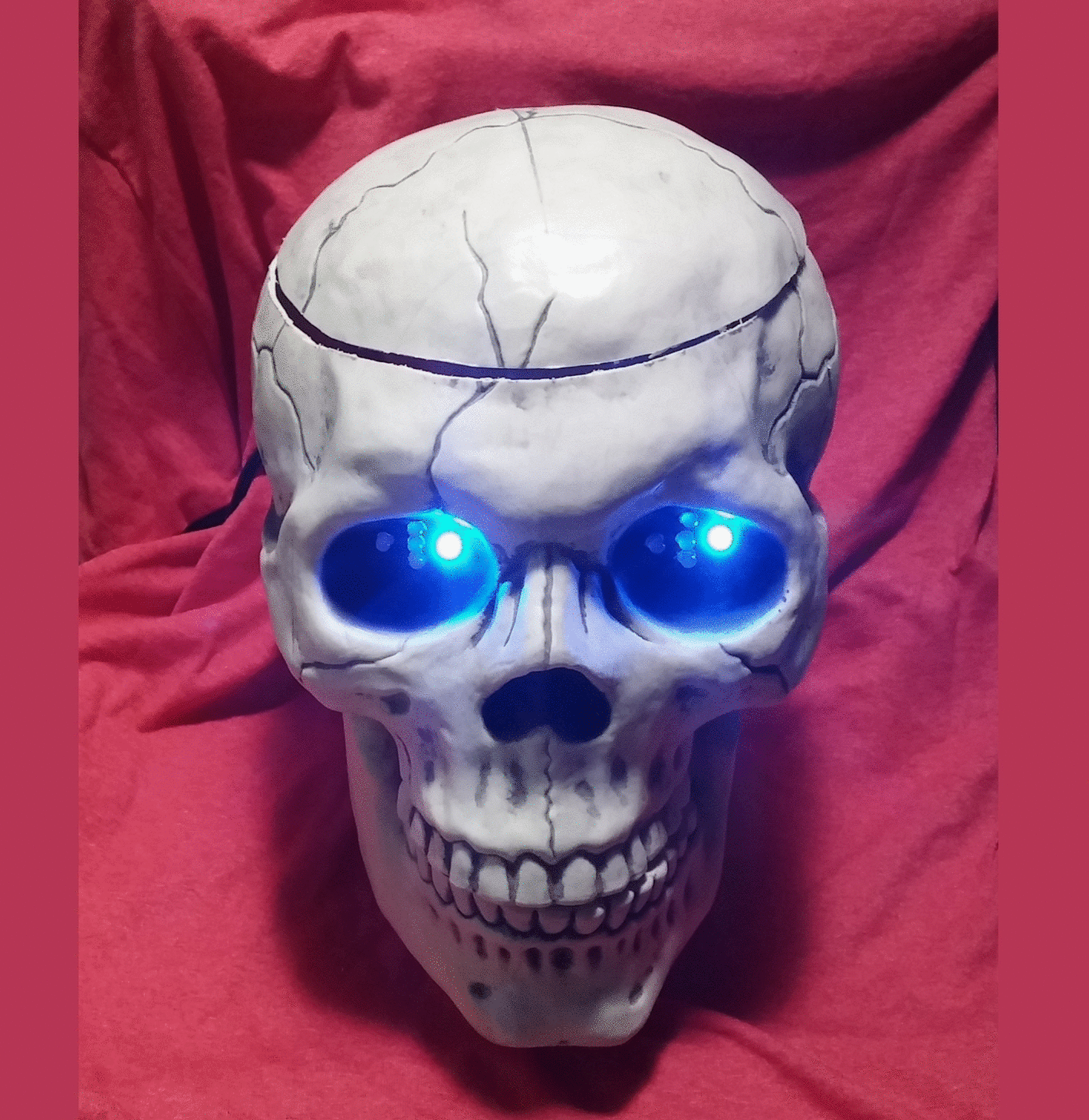
Halloween is fast approaching, so it’s time to break out the animatronics! I hunted around and found a great plastic skull to work with. It’s extra large and hollow… perfect for my idea: an animatronic skull candy jar to give those trick-or-treaters a bit of a spooky thrill.
As a visitor approaches the skull, they will see its cool blue eyes regarding them. The eyes move up, down, left, right, and all around, and blink randomly as well.
As our brave trick-or-treater comes closer, the skull’s Passive InfraRed (PIR) sensor will detect their movement. The eyes will suddenly turn red, and a creepy voice will laugh and say, “Take one,” offering a piece of candy from the skull’s now open lid. Finally, with a jaunty “Happy Halloween” the skull’s eyes will flash purple in warning, and the lid will slowly close.
This is a fun build that will require some use of a rotary cutting tool, hot glue gun, drilling, and soldering. Not scared away yet? Good, give it a try!
You can record your own sound effects and customize the eyes, jaw, and lid movements. If you build this project, please post links to pictures and videos. I’d love to see your take on it. Below is a video of the skull (I think I’ll call him Scully) being tested.




